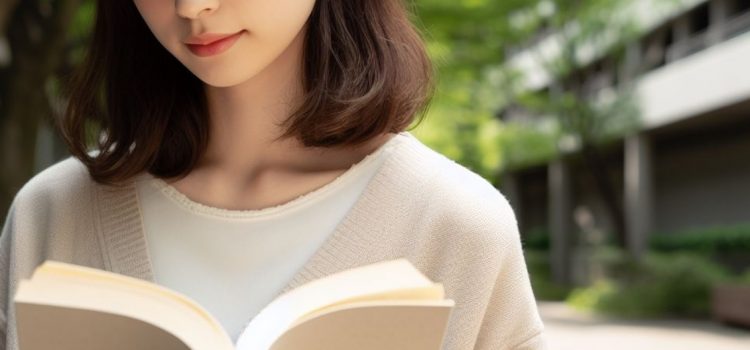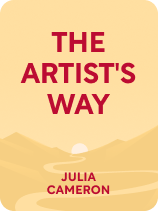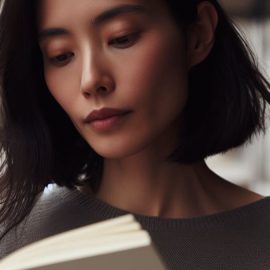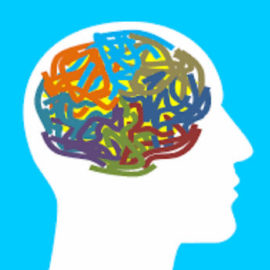

This article is an excerpt from the Shortform book guide to "The Artist's Way" by Julia Cameron. Shortform has the world's best summaries and analyses of books you should be reading.
Like this article? Sign up for a free trial here.
How comfortable are you with writing imperfectly—even journaling a “brain dump”? How in touch are you with your inner artist?
Many people feel it’s impossible to reach their creative potential—often because they struggle to find inspiration or experience creative blocks. Luckily, The Artist’s Way by Julia Cameron says that overcoming these obstacles and maximizing your creative potential is possible, and anyone can do it.
Continue reading for an overview of The Artist’s Way: A Spiritual Path to Higher Creativity.
Overview of The Artist’s Way by Julia Cameron
The Artist’s Way by Julia Cameron asserts that creativity is a spiritual force that everyone has access to. However, to channel this force into your art, you must first learn how to tap into it. The Artist’s Way: A Spiritual Path to Higher Creativity is Cameron’s 12-week program on accessing this creative force and using it to maximize your creativity and achieve your artistic destiny.
Cameron is a teacher, artist, poet, playwright, filmmaker, composer, and journalist. The publication of The Artist’s Way in 1992 marked a turning point in her career, giving her international recognition as a “creativity guru” and an expert on creative unblocking. Cameron’s teachings are based on her experiences of overcoming creative blocks like alcoholism and self-doubt and maximizing her creativity through spirituality. In 2022, Cameron published Seeking Wisdom—a follow-up to The Artist’s Way—that condenses her 12-week program into six weeks and focuses more closely on the role of spirituality and divinity in creativity.
We’ve organized Cameron’s 12-week program into two parts. In Part 1, we’ll discuss how to access the creative force by forming an intimate connection with yourself. In Part 2, we’ll explain how to foster a positive mindset conducive to creating art and resisting forms of negativity that block your creativity.
Part 1: Connect to Your Inner Artist
Cameron argues that human beings are creative by nature and that there’s a divine creative force that flows through all of us. This creative force is Cameron’s concept of “God.” She elaborates that you’re not required to call this force “God” or to associate it or yourself with any religion; however, to maximize your creative potential and attain your artistic destiny, you must believe in and learn how to tap into this force so it can flow through you and into your art. (Cameron refers to “art” as anything you use creativity to produce—art could be poetry, painting, philosophy, coding, developing new chemical compounds, and so on.)
The first step in tapping into the creative force, Cameron explains, is gaining an intimate connection to your inner artist—your deeper creative self that contains your seemingly crazy ideas, raw emotions, dreams, desires, and so on. This inner artist is a conduit for the creative force. The more intimate you are with this self, the more creative and artistically guided you’ll be.
We’ll discuss Cameron’s advice for uncovering and connecting to your inner artist.
Step #1: Write Morning Pages
One of Cameron’s primary methods for reaching your inner artist is to write morning pages—three full pages written every morning right after waking up. These pages can be about anything—last night’s dreams, your plans for the day, or things you’re excited or worried about. Don’t worry about making these coherent or well-written—just consider them a “brain dump.”
Cameron explains that morning pages help you connect with your inner artist in numerous ways. First, they clear your head of negative thoughts, concerns, and extraneous information that impact your mood or focus during the day. Worrying and overthinking often block out your less logical but more creative inner artist, so clearing this clutter right after waking up makes it easier to hear the voice of your inner artist throughout the day.
Further, Cameron argues that brain dumping through morning pages often uncovers hidden yet meaningful feelings and ideas that may otherwise remain unsurfaced. For example, you might recognize a pattern in your life that will inspire your art. Or, you may realize you’re deeply unhappy about an ongoing situation that must change to improve your well-being.
Step #2: Go on Solo Adventures
Cameron recommends taking yourself on at least one fun solo adventure (or “artist date”) a week. For example, you can visit a new place, take yourself to lunch at a cool restaurant, or paint in the park. These solo excursions are the perfect opportunity for you to gain inspiration and reflect on some of the deeper thoughts, feelings, and ideas you may have uncovered in your morning pages.
Further, Cameron explains that solitude is crucial to connect with your inner artist—this is the time when your creative self recharges. Without time alone, you’ll grow farther from your inner artist and, according to Cameron, become disgruntled with yourself and others.
Step #3: Uncover the Lost Parts of Your Inner Artist
Cameron explains that many elements of your inner artist—ideas, desires, dreams—often get killed off by your self-doubt and the doubts of friends, family, and society. However, these suppressed components are often the springboard for reaching your artistic destiny, or in other words, creating the art that you were destined to create.
To reacquaint yourself with the lost parts of your inner artist, Cameron recommends first reflecting on your childhood dreams and desires. Then, reflect on any of your recent or current dreams, desires, or ideas that you’ve convinced yourself not to explore—for money reasons, time reasons, practicality reasons, and so on.
For example, maybe you were interested in video production as a child but didn’t pursue it because you were told it doesn’t make good money—explore it now. Or, maybe you want to write a poetry book but think you’re not good enough—start now.
Step #4: Understand Your Inner Artist’s Emotions and Intuition
Cameron explains that, as you grow closer to your inner artist, you’ll experience a stronger sense of emotion and intuition. This can be overwhelming; therefore, you must understand and interpret these experiences to channel them into creativity and art.
According to Cameron, anger is the most common emotional experience that you must interpret and channel. She explains that anger indicates your likes, dislikes, and desires and signifies that you must take action. For example, let’s say you’re angry that your roommate moved your in-progress painting onto the floor so she could use your desk. Your anger is telling you that you need to speak up about your boundaries—tell your roommate not to touch your things without asking you.
Cameron adds that as you get closer to your inner artist and your creative intuition strengthens, experiences of synchronicity will begin to occur more frequently. Synchronicity is an instance where things seem to fall perfectly into place, external factors align in your favor, or meaningful patterns emerge. Cameron believes that these experiences are a form of divine intervention—some higher force is providing you with opportunities and hints that will progress you toward your artistic destiny. For example, perhaps you’ve been wanting to start dancing and end up meeting a dance instructor at the shop. Or you keep hearing about and seeing copies of a certain book about sculpting—maybe you’re meant to read it.
When these instances happen, Cameron says you must take advantage of them and trust your intuition. Many people convince themselves that synchronicities are coincidences, or that they’re unworthy of taking advantage of these synchronicities (they’ll fail or let themselves down in some way). Fight this urge, trust your intuition, follow the path that’s being opened for you, and Cameron says that you’ll end up exactly where you need to be.
Step #5: Engage With Your Inner Artist in Small Ways
Cameron recommends finding small ways to spark your creativity and engage with your inner artist that you can integrate into your daily life. One of the best ways to do so, she explains, is through movement—for example, doing yoga or going for a stroll. According to Cameron, moving your body gives you a break from hyper fixating on your thoughts by bringing your attention to the external environment. When you stop actively thinking and let your mind wander, you give more control to your inner artist. This helps you become more in tune with your feelings and makes you more likely to notice beauty and synchronicities around you.

———End of Preview———
Like what you just read? Read the rest of the world's best book summary and analysis of Julia Cameron's "The Artist's Way" at Shortform.
Here's what you'll find in our full The Artist's Way summary:
- How you can overcome obstacles and blocks to reach your creative potential
- An overview of Julia Cameron's 12-week program on accessing the creative force
- Why many artists fall into addictions and how to resist them






